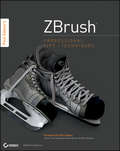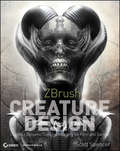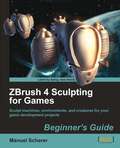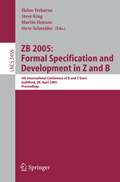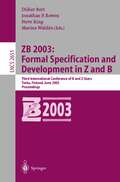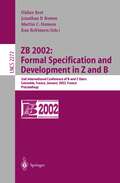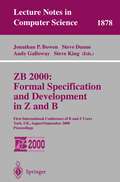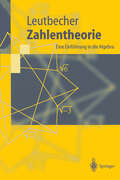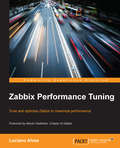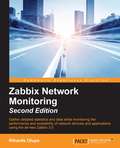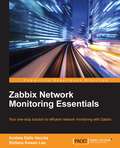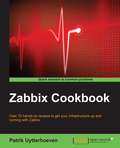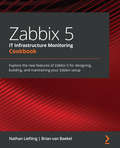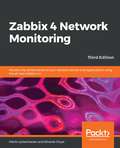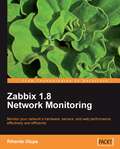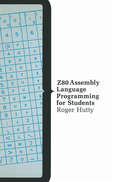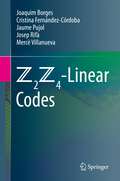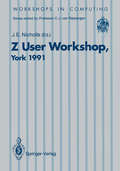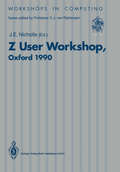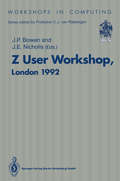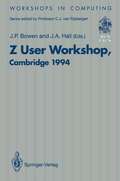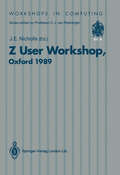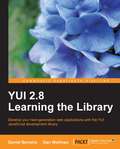- Table View
- List View
ZBrush Professional Tips and Techniques
by Paul GabouryLearn to work effectively and creatively with all versions of ZBrush! ZBrush is used by top artists in Hollywood to model and sculpt characters in such films as Avatar, Iron Man, and Pirates of the Caribbean. In addition, this amazing technology is also used in jewelry design, forensic science, aerospace, video games, toy creation, and the medical field. Written by Pixologic's in-house ZBrush expert Paul Gaboury, this full-color, beautifully illustrated guide provides you with the ultimate tips and tricks to maximize your use of all versions of ZBrush. Reveals numerous little-known tips and tricks that exist within ZBrush, but often go unexploited Shares an abundance of helpful techniques and insights that the author has acquired from years of helping professional artists in various industries Offers dozens of version-neutral solutions and shortcuts in areas such as sculpting, texturing, posing, rendering, and more Features "Artist Spotlights" from several ZBrush experts, offering their how-to's for using the feature-rich software in today's studios Improve your productivity and quality of work with this helpful, easy-to-understand resource.
ZBrush Creature Design: Creating Dynamic Concept Imagery for Film and Games
by Scott SpencerZero in on the most cutting-edge trend in creature design for film and games: ZBrush! ZBrush allows you to develop a creature for film and games in realistic, 3D format. With this book, you will learn how to create a unique creature from start to finish and search for and repair any foreseeable problems. Clear instructions guide you through using Photoshop in combination with ZBrush to finely render a creature so you can see how it will appear on screen. Experienced ZBrush author and designer Scott Spencer shows you how to start with your concept in ZBrush as a preliminary digital model and then further refine it in Photoshop in order to fabricate a hyperrealistic image. Guides you through artistic concepts to visualize your creature Walks you through the process of conceptualizing a creature in ZBrush Details techniques for using Photoshop to refine your design Encourages you to use ZBrush as a sculpting and designing tool and then use Photoshop as a painting and finishing tool ZBrush Creature Design helps you bring your creature concepts to life.
ZBrush Creature Design: Creating Dynamic Concept Imagery for Film and Games
by Scott SpencerZero in on the most cutting-edge trend in creature design for film and games: ZBrush! ZBrush allows you to develop a creature for film and games in realistic, 3D format. With this book, you will learn how to create a unique creature from start to finish and search for and repair any foreseeable problems. Clear instructions guide you through using Photoshop in combination with ZBrush to finely render a creature so you can see how it will appear on screen. Experienced ZBrush author and designer Scott Spencer shows you how to start with your concept in ZBrush as a preliminary digital model and then further refine it in Photoshop in order to fabricate a hyperrealistic image. Guides you through artistic concepts to visualize your creature Walks you through the process of conceptualizing a creature in ZBrush Details techniques for using Photoshop to refine your design Encourages you to use ZBrush as a sculpting and designing tool and then use Photoshop as a painting and finishing tool ZBrush Creature Design helps you bring your creature concepts to life.
ZBrush 4 Sculpting for Games Beginner's Guide: Beginner's Guide
by Manuel SchererIn DetailZBrush is a fantastic tool for creating models for use in computer games. Using a wide range of powerful tools you can create models for vehicles, props, environments, and characters.This book makes creating game art in ZBrush fast and easy. It covers everything you need to create models of all kinds for your game projects, even if you've never used ZBrush before.Built around four complete ZBrush projects, the book gives you everything you need to sculpt props, vehicles, and creatures in ZBrush. You'll start by creating a "spooky tree" model, mastering the sculpting, texturing, and decoration skills that are essential for all ZBrush topics. Next you'll move to man-made objects with a sci-fi drone. Next you'll see how to sculpt monsters and other creatures, deal with cloth and other soft materials, and prepare the model to become an animated, controllable character in a game. The final project returns to machines, building a complete, detailed spaceship for use in your sci-fi games.The only book to teach you everything about the best diagramming software for the MacintoshApproachThis guidebook is built around four complex example projects with clear step-by-step instructions followed by useful explanation, advice, and handy reference material. It is richly illustrated with a friendly, informal writing style. If you want to get started fast using ZBrush for games then this is the book for you.Who this book is forThis book is for all digital artists or game developers who want to create their own 3D sculptures in ZBrush. No experience with ZBrush is required - it's suitable for complete beginners and intermediate users.
ZB 2005: 4th International Conference of B and Z Users, Guildford, UK, April 13-15, 2005, Proceedings (Lecture Notes in Computer Science #3455)
by Helen Treharne Steve King Martin Henson Steve SchneiderZB 2003: Third International Conference of B and Z Users, Turku, Finland, June 4-6, 2003, Proceedings (Lecture Notes in Computer Science #2651)
by Didier Bert Jonathan P. Bowen Steve King Marina WaldénThe refereed proceedings of the Third International Conference of Z and B Users, ZB 2003, held in Turku, Finland in June 2003. The 28 revised full papers presented together with 3 invited papers were carefully reviewed and selected for inclusion in the book. The book documents the recent advances for the Z formal specification notation and for the B method, spanning the full scope from foundational, theoretical, and methodological issues to advanced applications, tools, and case studies.
ZB 2002: 2nd International Conference of B and Z Users Grenoble, France, January 23-25, 2002, Proceedings (Lecture Notes in Computer Science #2272)
by Didier Bert Jonathan P. Bowen Martin C. Henson Ken RobinsonZB 2000: First International Conference of B and Z Users York, UK, August 29 - September 2, 2000 Proceedings (Lecture Notes in Computer Science #1878)
by Jonathan P. Bowen Steve Dunne Andy Galloway Steve KingThis book constitutes the refereed proceedings of the First International Conference of B and Z Users, ZB 2000, held in York, UK in August/September 2000.The 25 revised full papers presented together with four invited contributions were carefully reviewed and selected for inclusion in the book. The book documents the recent advances for the Z formal specification notion and for the B method; the full scope, ranging from foundational and theoretical issues to advanced applications, tools, and case studies, is covered.
Zahlentheorie: Eine Einführung in die Algebra (Springer-Lehrbuch)
by Armin LeutbecherAuf der Grundlage der Mathematikkenntnisse des ersten Studienjahres bietet der Autor eine Einführung in die Zahlentheorie mit Schwerpunkt auf der elementaren und algebraischen Zahlentheorie. Das Buch wendet sich auch an Nichtspezialisten, denen es über die Zahlen frühzeitig den Weg in die Algebra öffnet. Angestrebte Ziele sind: Der Satz von Kronecker-Weber zur Krönung der Galois-Theorie, der Minkowskische Gitterpunktsatz, der Dirichletsche Primzahlsatz und die Bewertungstheorie der Körper.
Zabbix Performance Tuning
by Luciano AlvesThis book is aimed at Zabbix administrators who want to learn how to improve the performance of the Zabbix system. Basic knowledge of Zabbix's components and features is assumed.
Zabbix Network Monitoring - Second Edition
by Rihards OlupsGather detailed statistics and data while monitoring the performance and availability of network devices and applications using the all-new Zabbix 3.0About This BookMonitor your network and deploy impressive business solutions with Zabbix 3.0Manage hosts and system maintenance to keep your network performing for the people who use itA step-by-step guide to smarter network monitoringWho This Book Is ForIf you're new to Zabbix look no further than this book. It will show you how to put your sysadmin knowledge to work with Zabbix 3.0 so you can experience the full impact of this useful and increasingly popular tool.What You Will LearnGet to grips with the fundamentals of ZabbixFind out how Zabbix's features let you monitor your network with confidence and precisionLearn how to monitor SNMP devicesManage hosts, users, and permissions while acting upon monitored conditionsVisualize data with the help of ad-hoc graphs, custom graphs, maps, and reportsSimplify complex configurations and learn to automate themMonitor everything from web pages to IPMI devices and Java applications to and VMware statsTroubleshoot any network issue - fastIn DetailThis book is a perfect starting point for monitoring with Zabbix. Even if you have never used a monitoring solution before, this book will get you up and running quickly, before guiding you into more sophisticated operations with ease. You'll soon feel in complete control of your network, ready to meet any challenges you might face.Beginning with installation, you'll learn the basics of data collection before diving deeper to get to grips with native Zabbix agents and SNMP devices. You will also explore Zabbix's integrated functionality for monitoring Java application servers and VMware.Beyond this, Zabbix Network Monitoring also covers notifications, permission management, system maintenance, and troubleshooting - so you can be confident that every potential challenge and task is under your control. If you're working with larger environments, you'll also be able to find out more about distributed data collection using Zabbix proxies.Once you're confident and ready to put these concepts into practice, you'll find out how to optimize and improve performance. Troubleshooting network issues is vital for anyone working with Zabbix, so the book is also on hand to help you work through any technical snags and glitches you might face. Network monitoring doesn't have to be a chore - learn the tricks of the Zabbix trade and make sure you're network is performing for everyone who depends upon it.Style and approachThis book is a detailed and practical guide that starts from the fundamentals of Zabbix and takes you all the way to building a network monitoring solution that is capable of gathering data from range of different systems. With tips on low-level details that will boost any Zabbix users confidence and fluency, it's an unmissable resource for anyone interested in what's possible with Zabbix.
Zabbix Network Monitoring Essentials
by Andrea Dalle Vacche Stefano Kewan LeeIf you are an experienced network administrator looking for a comprehensive monitoring solution that will keep a watchful eye on networks, then this book is for you.
Zabbix Cookbook
by Patrik UytterhoevenIf you have some experience with Zabbix and wish to take your infrastructure to the next level, then this book is for you. Before you start with Zabbix, or monitoring in general, it is best to have some basic Linux knowledge and a good understanding of snmp, virtualization, and scripting.
Zabbix 5 IT Infrastructure Monitoring Cookbook: Explore the new features of Zabbix 5 for designing, building, and maintaining your Zabbix setup
by Nathan Liefting Brian van BaekelDiscover practical recipes to help you efficiently monitor enterprise IT infrastructure for Windows, Linux, and networkingKey FeaturesFind out how you can leverage some of the most exciting features of Zabbix 5Perform professional IT infrastructure and application monitoring on multiple platformsDiscover easy-to-follow, practical solutions to problems in network monitoring with ZabbixBook DescriptionZabbix offers useful insights into your infrastructure performance and issues and enables you to enhance your monitoring setup with its variety of powerful features. This book covers hands-on, easy-to-follow recipes for using Zabbix 5 for effectively monitoring the performance of devices and applications over networks. The book starts by guiding you through the installation of Zabbix and using the Zabbix frontend. You'll then work your way through the most prominent features of Zabbix and make the right design choices for building a scalable and easily manageable environment. The book contains recipes for building items and triggers for different types of monitoring, building templates, and using Zabbix proxies. As you advance, you'll learn how to use the Zabbix API for customization and manage your Zabbix server and database efficiently. Finally, you'll find quick solutions to the common and not-so-common problems that you may encounter in your everyday Zabbix monitoring work. By the end of this Zabbix book, you'll have learned how to use Zabbix for all your monitoring needs and be able to build a solid Zabbix setup by leveraging its key functionalities.What you will learnExplore the different types of monitoring available in Zabbix 5Find out how to build your own Zabbix templatesUse Zabbix proxies for effective load balancing/scalingWork with custom integrations and the Zabbix APISet up triggers and alerting with Zabbix 5Maintain your Zabbix setup for scaling, backups, and upgradesDiscover how to perform advanced Zabbix database managementMonitor cloud-based products such as Amazon Web Services (AWS), Azure, and DockerWho this book is forThis book is for IT engineers who want to get started with Zabbix and anyone with an intermediate understanding of Zabbix looking to extend their knowledge. Although not necessary, prior experience with Zabbix will help you to make the most of this book.
Zabbix 4 Network Monitoring - Third Edition: Monitor The Performance Of Your Network Devices And Applications Using The All-new Zabbix 4. 0, 3rd Edition
by Patrik UytterhoevenMaintaining and deploying Zabbix can be very challenging when things don’t work as expected. Problems in servers or any other systems if not efficiently detected can lead to multiple network issues. This book will help you get to grips with the fundamentals of Zabbix and teach you how to monitor your network with confidence and precision.
Zabbix 1.8 Network Monitoring: Monitor Your Network's Hardware, Servers, And Web Performance Effectively And Efficiently
by Rihards OlupsThis is a hand-on step-by-step book in a tutorial style. All configuration steps that are required to reach goals are explained in detail that should leave no reader stuck. Exact commands are provided for setting up and testing the configuration and screenshots of the user interface allow you to be sure that you are using the correct interface section. The author's experience with Zabbix enables him to share insights on using Zabbix effectively, in a clear and friendly way. This book assumes no experience with Zabbix and minimal experience with Linux. Knowledge provided by this book, will be useful if: you are responsible for managing in-house IT infrastructure such as network hardware, servers, and web pages, you are responsible for managing non-IT infrastructure that provides data such as temperature, flow, and other readings, you have clients with strict accessibility requirements and want to monitor hardware that provides services to them, you are a system administrator who wants to monitor the network hardware, servers, and web performance
Z2Z4-Linear Codes
by Joaquim Borges Cristina Fernández-Córdoba Jaume Pujol Josep Rifà Mercè VillanuevaThe theory developed for ℤ2ℤ4-additive codes is the starting point for much generalization about codes over mixed alphabets. They have opened a new, emergent area of research. The techniques used for ℤ2ℤ4-linear codes are being generalized and applied to more general codes. By example, these codes have contributed to the classification of many nonlinear codes. Moreover, they can be considered as the starting point of many different generalizations given over mixed alphabets, thereby representing a useful area of research. Since 2010, more than 30 papers have been published about the codes considered in the book, which includes important classes of binary codes (1-perfect, Hadamard, etc.) that are not linear in general. For example, much recent research has shown the application of the techniques described for the family of cyclic ℤ2ℤ4-linear codes. Topics and Features:Examines everything from the basic definitions to very advanced results Provides numerous examples, succinctly and comprehensively gathering and using the relevant information Includes examples using commands from a new Magma package, developed mostly by the same authors Proposes algorithms, for instance to describe coding and decoding strategiesThis unique volume will be eminently suitable for researchers working on coding theory over rings, especially over mixed alphabets. Experts will find commands and algorithms that will be useful in the generalization to codes over mixed alphabets. Additionally, by outlining the basic theory of codes over mixed alphabets and providing numerous examples, the book will be useful to researchers wanting to be introduced to the topic.The authors are all affiliated with the Dept. of Information and Communications Engineering at the Universitat Autònoma de Barcelona, Spain. Joaquim Borges and Cristina Fernández-Córdoba are Associate Professors, Jaume Pujol is a now retired Associate Professor, Josep Rifà is Professor Emeritus, and Mercè Villanueva is Associate Professor.
Z User Workshop, York 1991: Proceedings of the Sixth Annual Z User Meeting, York 16–17 December 1991 (Workshops in Computing)
by J. E. NichollsIn ordinary mathematics, an equation can be written down which is syntactically correct, but for which no solution exists. For example, consider the equation x = x + 1 defined over the real numbers; there is no value of x which satisfies it. Similarly it is possible to specify objects using the formal specification language Z [3,4], which can not possibly exist. Such specifications are called inconsistent and can arise in a number of ways. Example 1 The following Z specification of a functionf, from integers to integers "f x : ~ 1 x ~ O· fx = x + 1 (i) "f x : ~ 1 x ~ O· fx = x + 2 (ii) is inconsistent, because axiom (i) gives f 0 = 1, while axiom (ii) gives f 0 = 2. This contradicts the fact that f was declared as a function, that is, f must have a unique result when applied to an argument. Hence no suchfexists. Furthermore, iff 0 = 1 andfO = 2 then 1 = 2 can be deduced! From 1 = 2 anything can be deduced, thus showing the danger of an inconsistent specification. Note that all examples and proofs start with the word Example or Proof and end with the symbol.1.
Z User Workshop, Oxford 1990: Proceedings of the Fifth Annual Z User Meeting, Oxford, 17–18 December 1990 (Workshops in Computing)
by J. E. NichollsZ User Workshop, London 1992: Proceedings of the Seventh Annual Z User Meeting, London 14–15 December 1992 (Workshops in Computing)
by J. P. Bowen J. E. NichollsThe Z notation has been developed at the Programming Research Group at the Oxford University Computing Laboratory and elsewhere for over a decade. It is now used by industry as part of the software (and hardware) development process in both Europe and the USA. It is currently undergoing BSI standardisation in the UK, and has been proposed for ISO standardisation internationally. In recent years researchers have begun to focus increasingly on the development of techniques and tools to encourage the wider application of Z and other formal methods and notations. This volume contains papers from the Seventh Annual Z User Meeting, held in London in December 1992. In contrast to previous years the meeting concentrated specifically on industrial applications of Z, and a high proportion of the participants came from an industrial background. The theme is well represented by the four invited papers. Three of these discuss ways in which formal methods are being introduced, and the fourth presents an international survey of industrial applications. It also provides a reminder of the improvements which are needed to make these methods an accepted part of software development. In addition the volume contains several submitted papers on the industrial use of Z, two of which discuss the key area of safety-critical applications. There are also a number of papers related to the recently-completed ZIP project. The papers cover all the main areas of the project including methods, tools, and the development of a Z Standard, the first publicly-available version of which was made available at the meeting. Finally the volume contains a select Z bibliography, and section on how to access information on Z through comp.specification.z, the international, computer-based USENET newsgroup. Z User Workshop, London 1992 provides an important overview of current research into industrial applications of Z, and will provide invaluable reading for researchers, postgraduate students and also potential industrial users of Z.
Z User Workshop, Cambridge 1994: Proceedings of the Eighth Z User Meeting, Cambridge 29–30 June 1994 (Workshops in Computing)
by J. P. Bowen J. A. HallThis volume contains papers from the Eighth Z User Meeting, to be held at the University of Cambridge from 29 - 30 June 1994. The papers cover a wide range of issues associated with Z and formal methods, with particular reference to practical application. These issues include education, standards, tool support, and interaction with other design paradigms such as consideration of real-time and object-oriented approaches to development. Among the actual topics covered are: the formal specification in Z of Defence Standard 00-56; formal specification of telephone features; specifying and interpreting class hierarchies in Z; and software quality assurance using the SAZ method. Z User Workshop, Cambridge 1994 provides an important overview of current research into industrial applications of Z, and will provide invaluable reading for researchers, postgraduate students and also potential industrial users of Z.
Z User Workshop: Proceedings of the Fourth Annual Z User Meeting Oxford, 15 December 1989 (Workshops in Computing)
by John E. NichollsThe mathematical concepts and notational conventions we know of as Z were first proposed around 1981. Its origins were in line with the objectives of the PRG - to establish a mathematical basis for program ming concepts and to verify the work by case studies with industry. Hence among early Z users some were from academic circles, with interests in the mathematical basis of programming; others came from industry and were involved with pilot projects and case studies linked with the Programming Research Group. Four years ago we had the first Z User Meeting, a fairly modest affair with representatives more or less equally divided between academia and industry. At the first meeting there were, as in this meeting, a variety of technical papers, reports of work in progress and discussions. A number of people from industry came along, either because they had begun to use Z or were curious about the new direction. In the discussion sessions at the end of the meeting, there were calls from attendees for the establishment of a more stable base for the notation, including work on its documentation and standards. Many of these requests have now been satisfied and the notation is now being proposed for standards development.
YUI 2.8 Learning the Library: Develop Your Next-generation Web Applications With The Yui Javascript Development Library
by Daniel Barreiro Dan WellmanIn DetailThe YUI Library is a set of utilities and controls written in JavaScript for building Rich Internet Applications, across all major browsers and independently of any server technology. There's a lot of functionality baked into YUI, but getting to and understanding that functionality is not for the faint of heart. This book gives you a clear picture of YUI through a step-by-step approach, packed with lots of examples.YUI 2.8: Learning the Library covers all released (non-beta) components of the YUI 2.8 Library in detail with plenty of working examples, looking at the classes that make up each component and the properties and methods that can be used. It includes a series of practical examples to reinforce how each component should/can be used, showing its use to create complex, fully featured, cross-browser, Web 2.0 user interfaces. It has been updated from its first edition with the addition of several chapters covering several new controls and enriched with lots of experience of using them.You will learn to create a number of powerful JavaScript controls that can be used straightaway in your own applications. Besides giving you a deep understanding of the YUI library, this book will expand your knowledge of object-oriented JavaScript programming, as well as strengthen your understanding of the DOM and CSS. The final chapter describes many of the tools available to assist you the developer in debugging, maintaining, and ensuring the best quality in your code. In this new edition, all the examples have been updated to use the most recent coding practices and style and new ones added to cover newer components. Since the basic documentation for the library is available online, the focus is on providing insight and experience.The authors take the reader from beginner to advanced-level YUI usage and understanding.The beginner to advanced-level guide for understanding the YUI libraryApproachThe book is a tutorial, leading the reader first through the basics of the YUI library before moving on to more complex examples involving the YUI controls and utilities. The book is heavily example driven, and based around an approach of tinkering and extending to improve.Who this book is forThis book is for web developers comfortable with JavaScript and CSS, who want to use the YUI library to easily put together rich, responsive web interfaces. No knowledge of the YUI library is presumed.
You've Got Mail: A funny and relatable debut romcom
by Kate G. SmithIt's been fun, but I think we should stop seeing each other. Thanks for a great laugh xWhen Grace Wharton is dumped by email from a relationship she isn't even in, she adds it to the list of ways her life hasn't quite panned out: twenty-five, single, and working a dead-end job she doesn't enjoy. She fires off an angry response to Mr Obnoxious - how dare he try to dump someone over email?! - knowing that telling off a random stranger online means she has reached an all-time low.Everything changes when her boss asks her to go to a big sales conference to secure an important client. Her partner is Jack Lockett, company Casanova and Grace's long-time crush. What's more, he seems very interested... But Mr Obnoxious keeps sending her emails and Grace keeps replying. Only to make sure he doesn't send any more heart-breaking emails, obviously.Grace's life has suddenly gone from stagnant to brimming with possibilities. But is it all too good to be true?A witty, charming and all too relatable debut romcom, You've Got Mail is perfect for fans of Sophie Ranald, Mhairi McFarlane and Joanna Bolouri.
